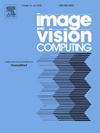ProtoMed: Prototypical networks with auxiliary regularization for few-shot medical image classification
IF 4.2
3区 计算机科学
Q2 COMPUTER SCIENCE, ARTIFICIAL INTELLIGENCE
引用次数: 0
Abstract
Although deep learning has shown impressive results in computer vision, the scarcity of annotated medical images poses a significant challenge for its effective integration into Computer-Aided Diagnosis (CAD) systems. Few-Shot Learning (FSL) opens promising perspectives for image recognition in low-data scenarios. However, applying FSL for medical image diagnosis presents significant challenges, particularly in learning disease-specific and clinically relevant features from a limited number of images. In the medical domain, training samples from different classes often exhibit visual similarities. Consequently, certain medical conditions may present striking resemblances, resulting in minimal inter-class variation. In this paper, we propose a prototypical network-based approach for few-shot medical image classification for low-prevalence diseases detection. Our method leverages meta-learning to use prior knowledge gained from common diseases, enabling generalization to new cases with limited data. However, the episodic training inherent in meta-learning tends to disproportionately emphasize the connections between elements in the support set and those in the query set, which can compromise the understanding of complex relationships within medical image data during the training phase. To address this, we propose an auxiliary network as a regularizer in the meta-training phase, designed to enhance the similarity of image representations from the same class while enforcing dissimilarity between representations from different classes in both the query and support sets. The proposed method has been evaluated using three medical diagnosis problems with different imaging modalities and different levels of visual imaging details and patterns. The obtained model is lightweight and efficient, demonstrating superior performance in both efficiency and accuracy compared to state-of-the-art. These findings highlight the potential of our approach to improve performance in practical applications, balancing resource limitations with the need for high diagnostic accuracy.
求助全文
约1分钟内获得全文
求助全文
来源期刊

Image and Vision Computing
工程技术-工程:电子与电气
CiteScore
8.50
自引率
8.50%
发文量
143
审稿时长
7.8 months
期刊介绍:
Image and Vision Computing has as a primary aim the provision of an effective medium of interchange for the results of high quality theoretical and applied research fundamental to all aspects of image interpretation and computer vision. The journal publishes work that proposes new image interpretation and computer vision methodology or addresses the application of such methods to real world scenes. It seeks to strengthen a deeper understanding in the discipline by encouraging the quantitative comparison and performance evaluation of the proposed methodology. The coverage includes: image interpretation, scene modelling, object recognition and tracking, shape analysis, monitoring and surveillance, active vision and robotic systems, SLAM, biologically-inspired computer vision, motion analysis, stereo vision, document image understanding, character and handwritten text recognition, face and gesture recognition, biometrics, vision-based human-computer interaction, human activity and behavior understanding, data fusion from multiple sensor inputs, image databases.
 求助内容:
求助内容: 应助结果提醒方式:
应助结果提醒方式:


